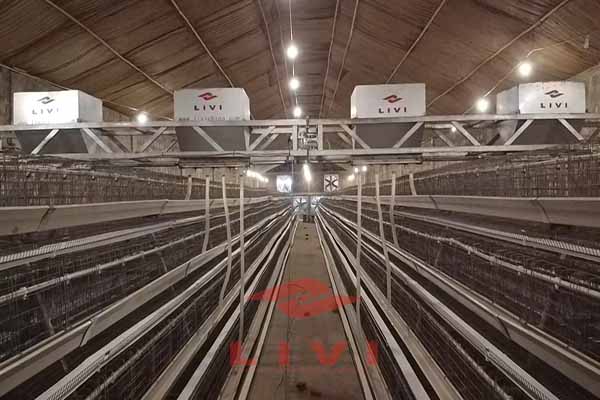Automated Manure Cleaning Equipment for a Farm with 20,000 Chickens in Uganda
Time : 2025-07-03
In the bustling agricultural landscape of Uganda, where poultry farming is a vital component of the economy, maintaining a clean and hygienic environment is crucial for the health and productivity of the farm. For a farm housing 20,000 chickens, the implementation of automated manure cleaning equipment is not just beneficial but essential. This article delves into the intricacies of choosing and implementing such equipment, ensuring the farm remains efficient and profitable.
Introduction to Automated Manure Cleaning Equipment
Automated manure cleaning equipment is designed to streamline the process of removing waste from poultry houses. For a farm with 20,000 chickens, manual cleaning would be not only time-consuming but also labor-intensive. The use of automated systems can significantly reduce the workload, improve cleanliness, and maintain the overall health of the flock.
Key Considerations for a Farm with 20,000 Chickens
1. Space and Layout
The layout of the poultry house plays a critical role in determining the type of manure cleaning equipment that can be effectively used. For a farm with 20,000 chickens, the space must be designed to accommodate the equipment without hindering the movement of the chickens.
2. Chicken Density
The density of chickens on the farm will influence the cleaning frequency and the type of equipment required. High-density farms require more frequent cleaning to prevent the buildup of waste and to maintain air quality.
3. Manure Type
Different breeds of chickens produce different types of manure. The equipment should be capable of handling the specific type of manure produced by the chickens on the farm.
Types of Automated Manure Cleaning Equipment
1. Scraping Systems
Scraping systems use conveyor belts or blades to remove manure from the floor of the poultry house. They are suitable for farms with a solid flooring system. For a farm with 20,000 chickens, a system that can handle the volume of waste produced is essential.
2. Flush Systems
Flush systems use water to clean the manure from the floor. This method is effective for farms with slatted floors, as it helps in the separation of manure from the chicken litter. The water used in flush systems can be recycled, reducing water consumption.
3. Self-Cleaning Floors
Self-cleaning floors are designed to automatically remove manure as the chickens move around. These systems are ideal for high-density farms and can significantly reduce the labor required for cleaning.
Implementation Process
1. Needs Assessment
Before purchasing automated manure cleaning equipment, a thorough needs assessment should be conducted. This includes evaluating the current cleaning methods, the volume of waste produced, and the space available for equipment installation.
2. Equipment Selection
Based on the needs assessment, the appropriate type of equipment should be selected. Considerations should include the type of flooring, the density of chickens, and the budget.
3. Installation
Professional installation is crucial to ensure that the equipment operates efficiently and safely. The installation team should be experienced in handling poultry farm equipment.
4. Training
Training the farm staff on how to operate and maintain the equipment is essential. Regular maintenance will ensure the longevity and efficiency of the system.
Benefits of Automated Manure Cleaning Equipment
1. Improved Health
Automated cleaning reduces the risk of disease transmission and improves the overall health of the chickens.
2. Increased Productivity
By reducing the time spent on cleaning, farm workers can focus on other tasks, increasing overall productivity.
3. Cost Savings
While the initial investment in automated equipment can be significant, the long-term cost savings from reduced labor and improved health can be substantial.
Conclusion
For a farm with 20,000 chickens in Uganda, the implementation of automated manure cleaning equipment is a strategic move that can lead to improved health, increased productivity, and cost savings. By carefully considering the type of equipment, the layout of the farm, and the training of staff, a farm can ensure that the transition to automated cleaning is smooth and effective.












